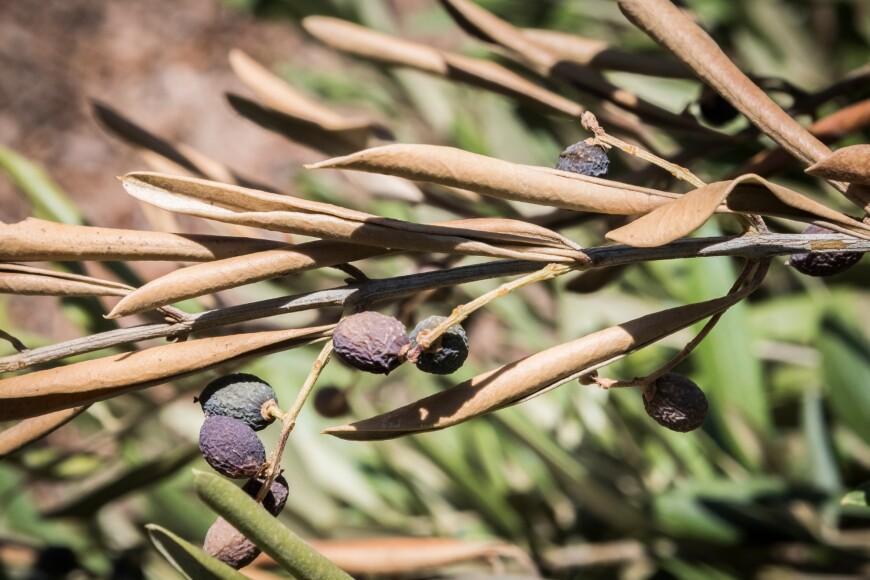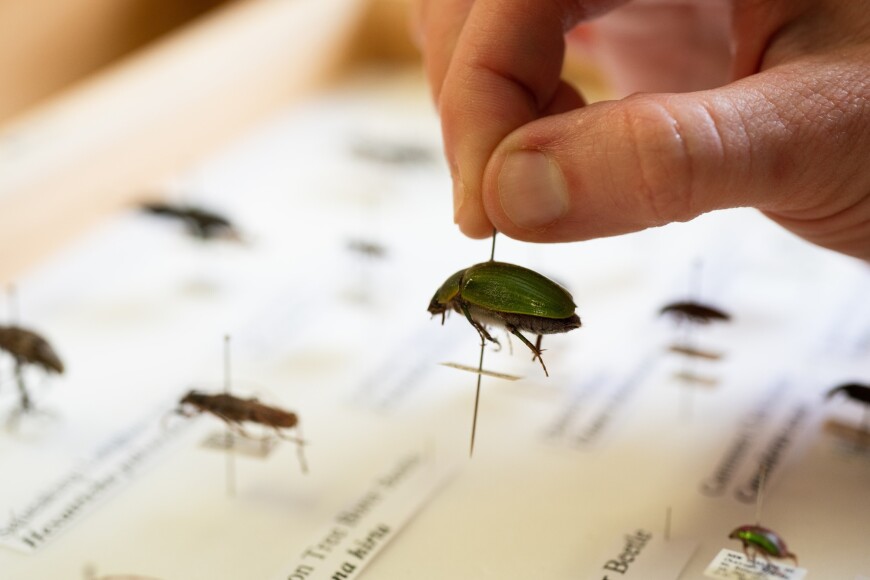Using overseas plant specimens to protect our biosecurity
Xylella fastidiosa (Xf) is one of the most important plant biosecurity threats to New Zealand. It affects more than 500 plant species, including economically important agricultural crops such as grapevines, summerfruit, citrus and olive, but it is not currently known to be present in New Zealand. As part of the Better Border Biosecurity (B3) collaboration, researchers at Manaaki Whenua screened collections of New Zealand indigenous plants in arboretums and botanical gardens overseas for plant pathogens from the Xylella genus. This work is helping scientists to assess the risk of Xf to New Zealand’s indigenous flora and the potential spillover to agricultural crops. As a result of the study, MPI has updated its list of indigenous plant species that are confirmed hosts of Xf.

Xylella fastidiosa on an olive crop
A new rapid camera system for insect specimen imaging
Staff at the New Zealand Arthropod Collection, led by entomologist Dr Aaron Harmer with contributions from Dr Darren Ward and Leanne Elder, have created two new semi-automated imaging tools for quickly capturing label images of pinned insect specimens for digitisation. Known as the Raked Pinned Insect Imaging Device (RAPIID), the hardware for these image systems is modular and customisable to user needs. The team has also developed a scaled-down version, RAPIIDlite, and software to run the devices, allowing them to be used by non-experts and volunteers. Initial testing shows that these tools make the imaging process around four times quicker, as well as standardising the processes and reducing error rates.

